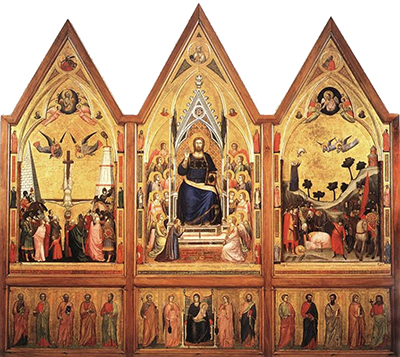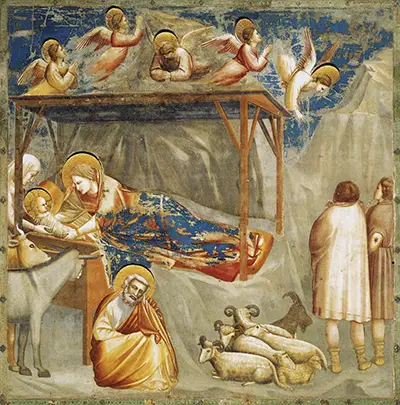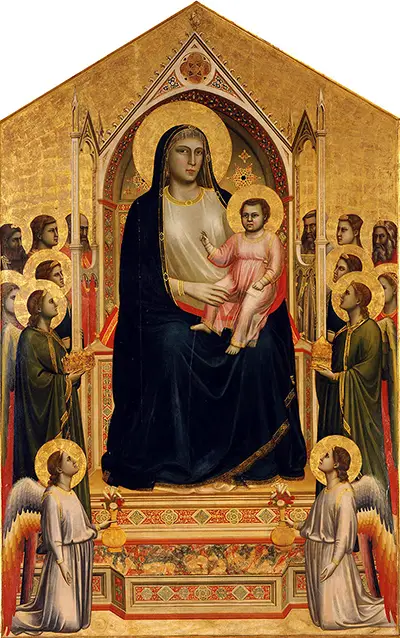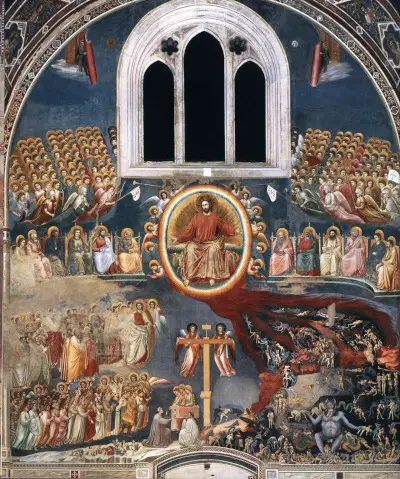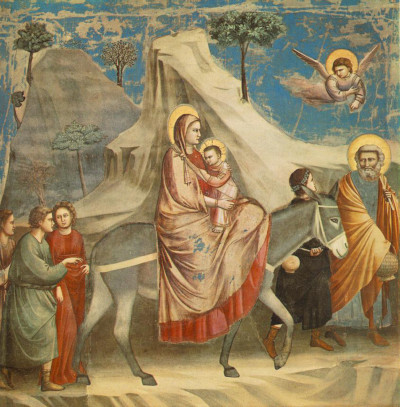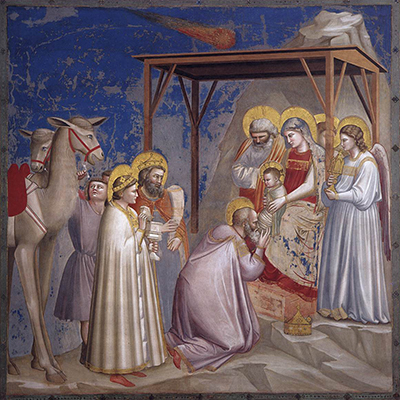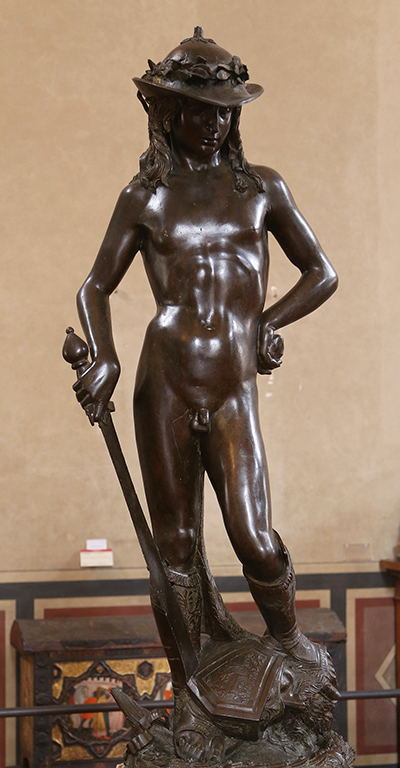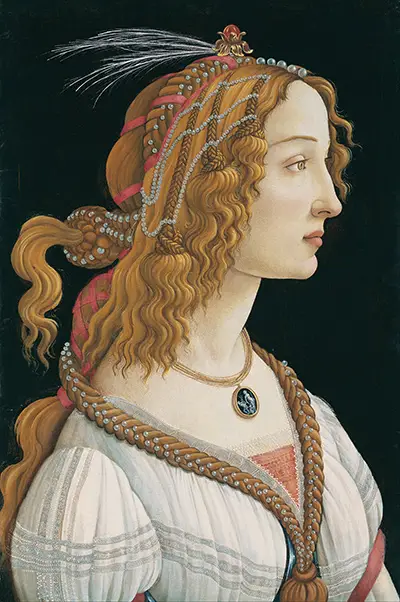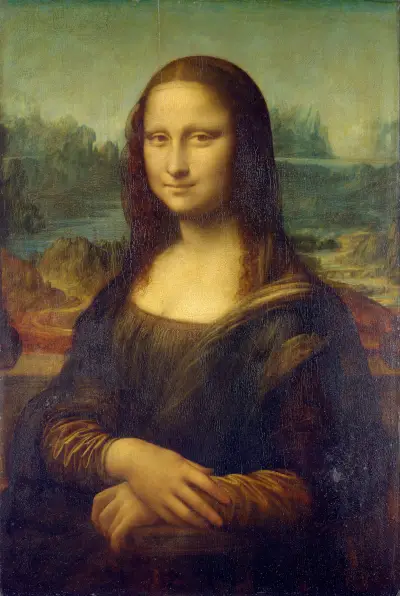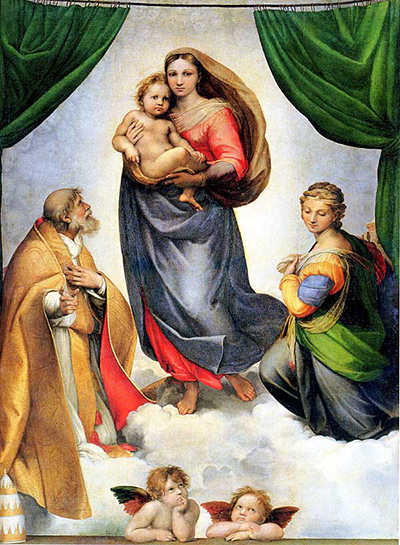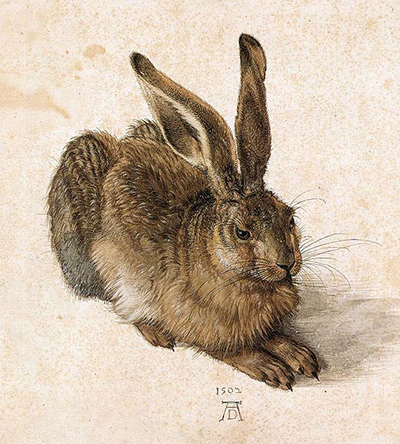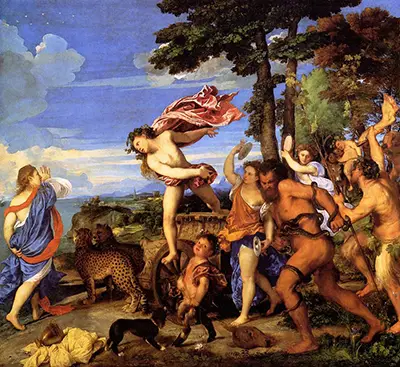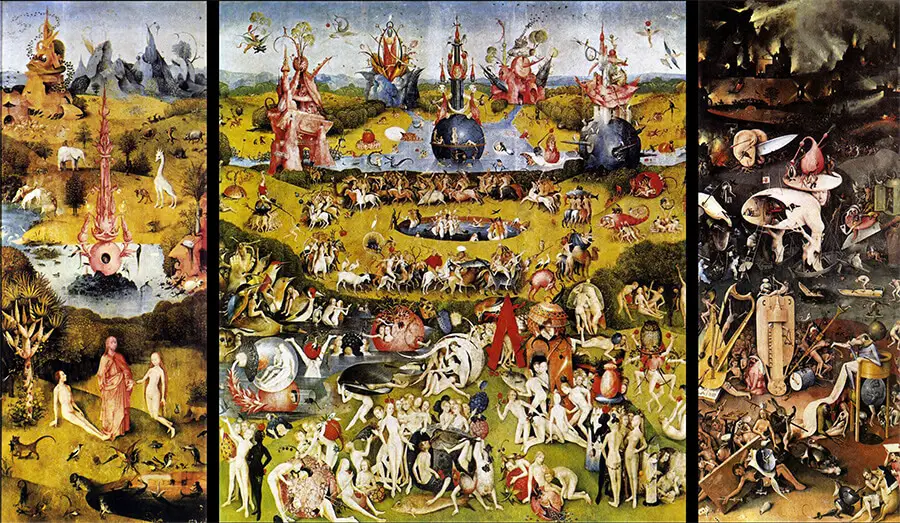Presentation of Christ at the Temple by Giotto is a religious painting dated c.1304 - c.130. It is one of Giotto’s series called Scenes from the Life of Christ, located at Scrovegni (Arena) Chapel, Padua, Italy. The medium is Oil on a 200 x 185 cm canvas, and the style is Proto-Renaissance.
It is a series of images showing activities around a Jewish tradition, from entrance to the temple to completion of the procedure. Jesus Christ is known as the Saviour in the bible. This painting shows Jesus, just about to undergo one of the Jewish traditions, known as dedication. Traditionally, it was a requirement in the Law of Moses that every firstborn male is dedicated. 'As it is written in the Law of the Lord, every firstborn male is to be consecrated to The Lord.' Luke 2:23.
To the left, a woman presents a baby. A man stands behind her, and another woman behind the man. There is something special about the man and woman which is brought about by the woman behind them. These two have sort of yellow crowns on their heads, while the other woman doesn't have. According to the bible, the man is named Joseph while the woman is named Mary, and the two were Jesus' parents. The crown represents the divinity of the parents. Notably, these two were "chosen by God" to bring forth "The Saviour of the World" and hence the divine nature. The blue colour also adds to the chosen nature of the baby, since blue is a sign of royalty.
Joseph happens to hold two doves. In the biblical context, a family was required to offer a sacrifice in the temple. 'A pair of doves or two young Pigeons.' Luke 2:24. This action explains why the father presents the doves. According to biblical history, a low-income family would opt for doves rather than pigeons, which explains the records that the Saviour was lowly, and from a humble background.
Towards the left is a man holding a baby, and a woman stands behind them. The man represents Simeon, referred to as righteous and devout. The yellow crown also appears upon his head. The woman behind him is a prophetess known as Anna. She holds a script to represent her priestly role in the dedication. In another image, an angel hovers above Anna. The angel is a sign of acceptance of the divine baby, Jesus Christ, and also adds to the divine nature of the subject and tradition. In a later image, the man hands the baby back to the mother, which represents the end of the procedure. Presentation of Christ at the Temple by Giotto speaks volumes on the dedication of Jesus Christ and brings the reality of the procedure in a few images. From the divine crowns to the humility of the participants, the lowly yet divine life of Jesus is displayed.
More Renaissance Artists



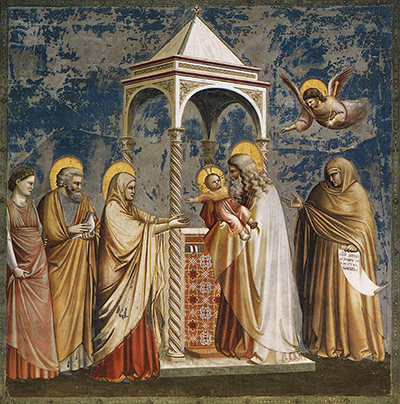
 Giotto.jpg)
 Giotto.jpg)
